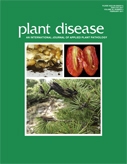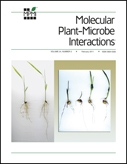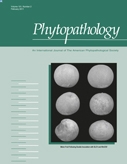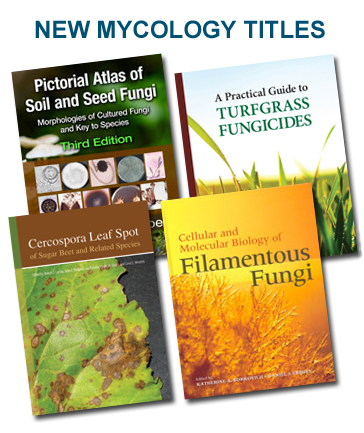|
Editors' Picks | |
 Plant Disease Editor's Pick by Plant Disease Editor's Pick by
Dr. R. Michael Davis
A comprehensive study on the temporal and spatial dynamics of Bean pod mottle virus in soybean is described in the February issue of Plant Disease. Byamukama and colleagues use a variety of analyses to explain influencing factors on epidemics caused by the virus and suggest methods for optimal sampling designs. The severity of the disease was strongly influenced by populations of the insect vector and date of first virus detection. Read more...
MPMI Editor's Pick by
Dr. Gary Stacey, Editor-in-Chief
 In the February issue of MPMI, Pandey et al. report the identification of key soybean genes that control Rpp2-mediated resistance to soybean asian rust (Phakopsora pachyrhizi). The authors utilized viral induced gene silencing to screen 140 gene candidates ultimately identifying 11 genes, including known immunity genes, important for fungal resistance. This paper nicely demonstrates the increasing capacity to do sophisticated genetic and molecular analyses using crop plants. This is also one of last month's most read papers. Read more... In the February issue of MPMI, Pandey et al. report the identification of key soybean genes that control Rpp2-mediated resistance to soybean asian rust (Phakopsora pachyrhizi). The authors utilized viral induced gene silencing to screen 140 gene candidates ultimately identifying 11 genes, including known immunity genes, important for fungal resistance. This paper nicely demonstrates the increasing capacity to do sophisticated genetic and molecular analyses using crop plants. This is also one of last month's most read papers. Read more...
Phytopathology Editor's Pick by
Dr. Niklaus Grunwald, Editor-in-Chief
 Typically quantitative trait locus (QTL) mapping relies on visual assessment of disease severity. Poland and Nelson's insightful work evaluated the effect of rater variability and rating scales on QTL mapping. Although variability between raters exists, QTLs were reliably identified by independent raters. However, the magnitude of the estimated allele effects, were highly variable among raters. Comparison of disease using the 0-to-9 scale versus the percentage scale showed that scoring with the percentage scale was significantly more precise. Read more... Typically quantitative trait locus (QTL) mapping relies on visual assessment of disease severity. Poland and Nelson's insightful work evaluated the effect of rater variability and rating scales on QTL mapping. Although variability between raters exists, QTLs were reliably identified by independent raters. However, the magnitude of the estimated allele effects, were highly variable among raters. Comparison of disease using the 0-to-9 scale versus the percentage scale showed that scoring with the percentage scale was significantly more precise. Read more... |
|
All Mycology Titles On Sale for a Limited Time! | |
|

Shop Now |